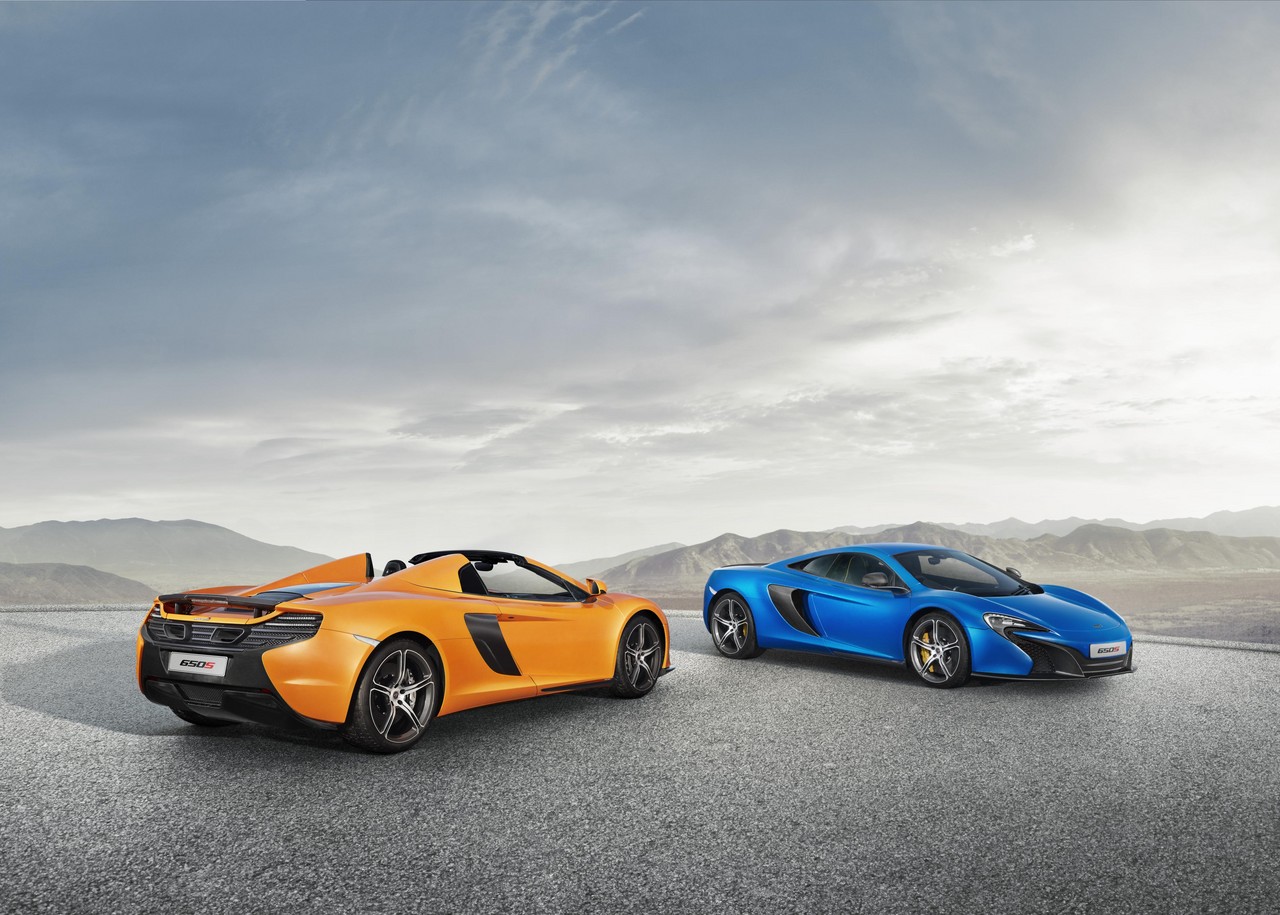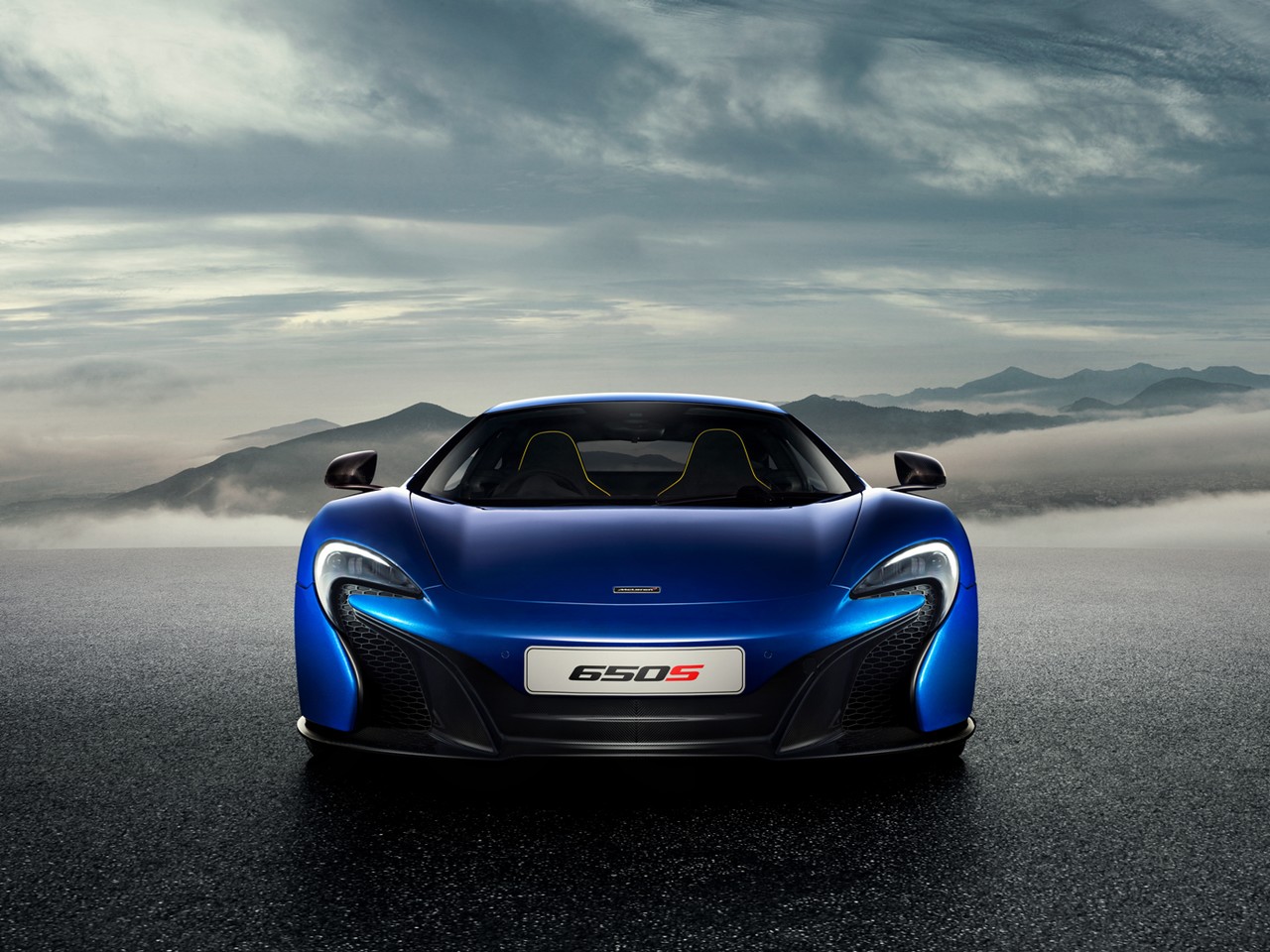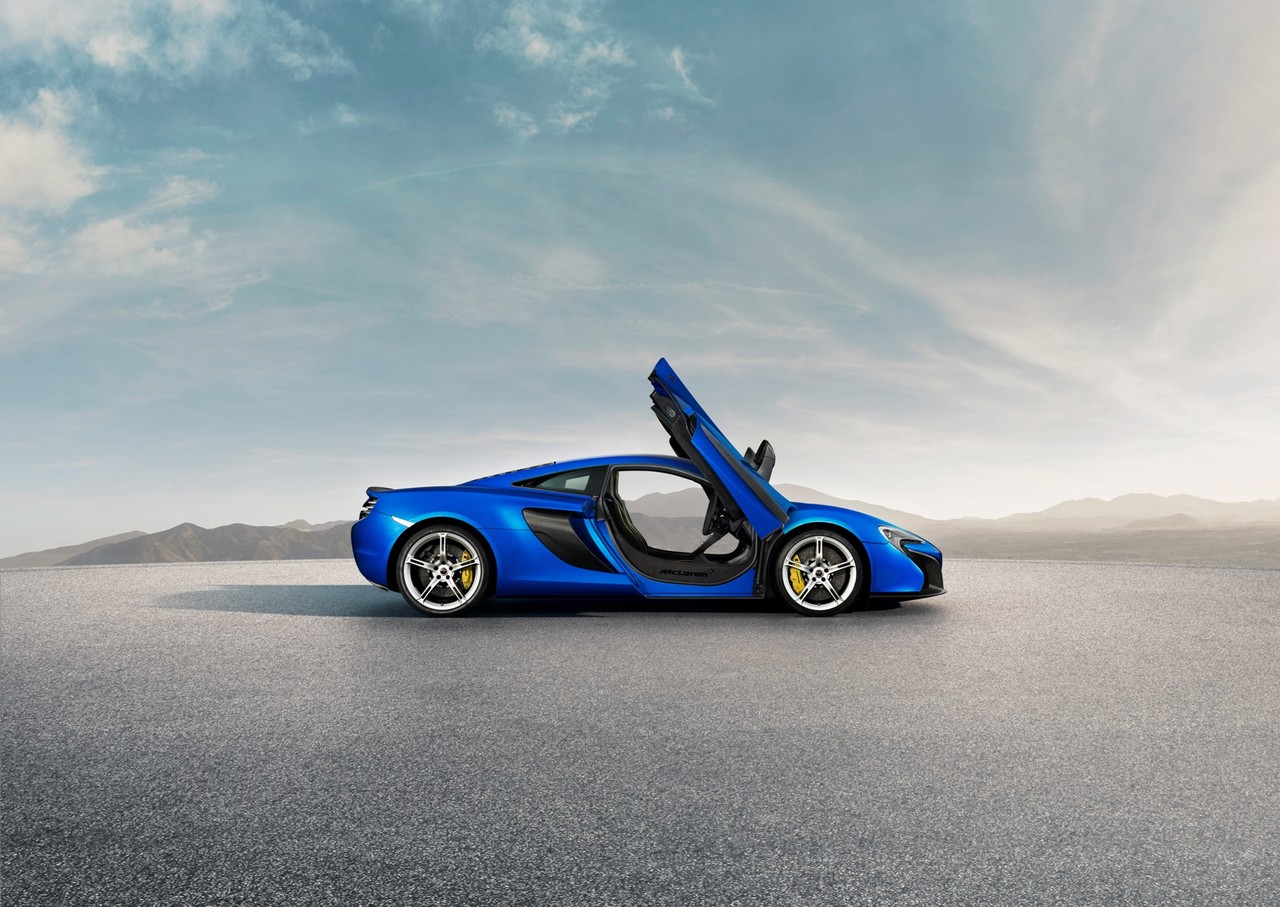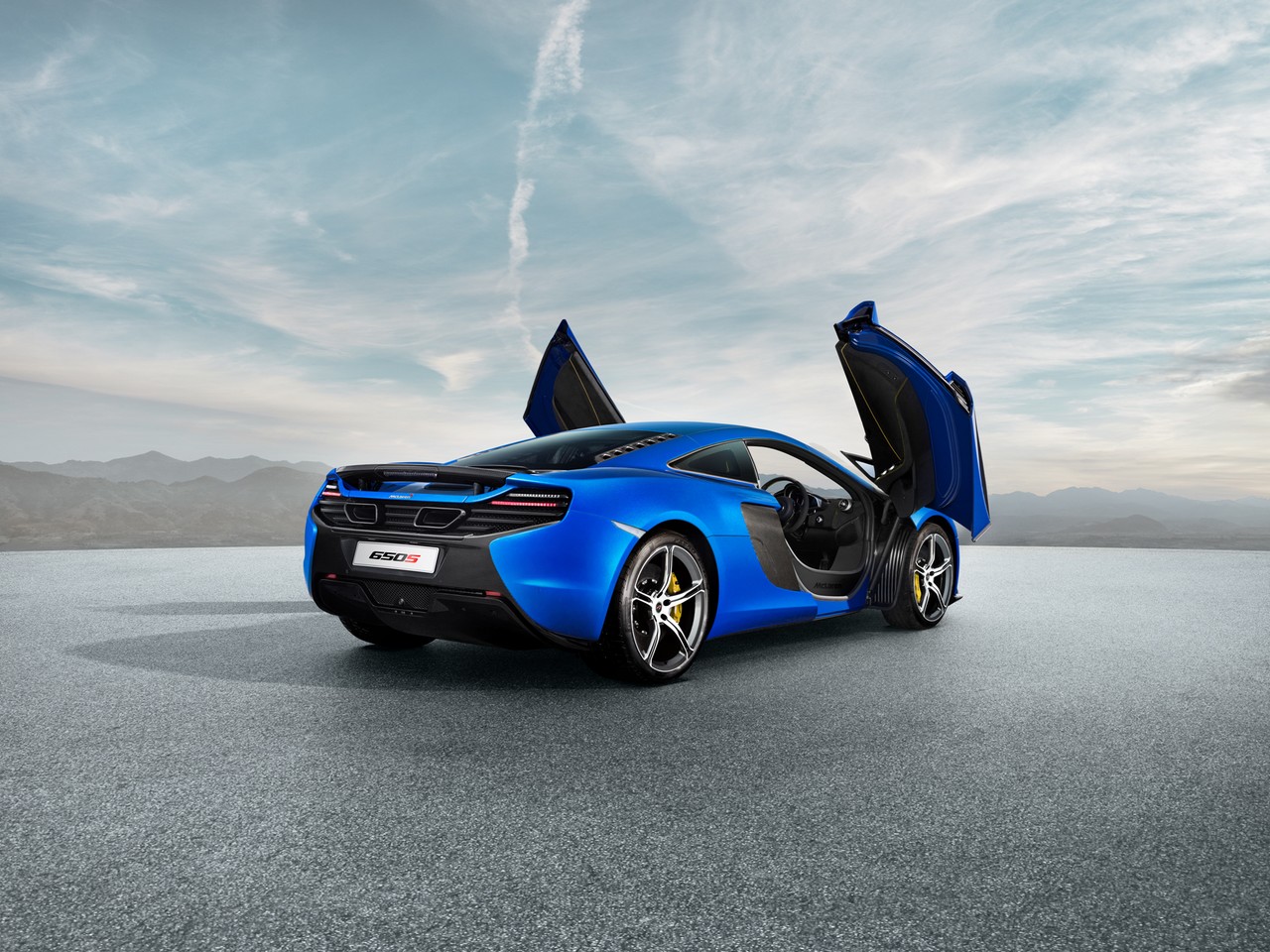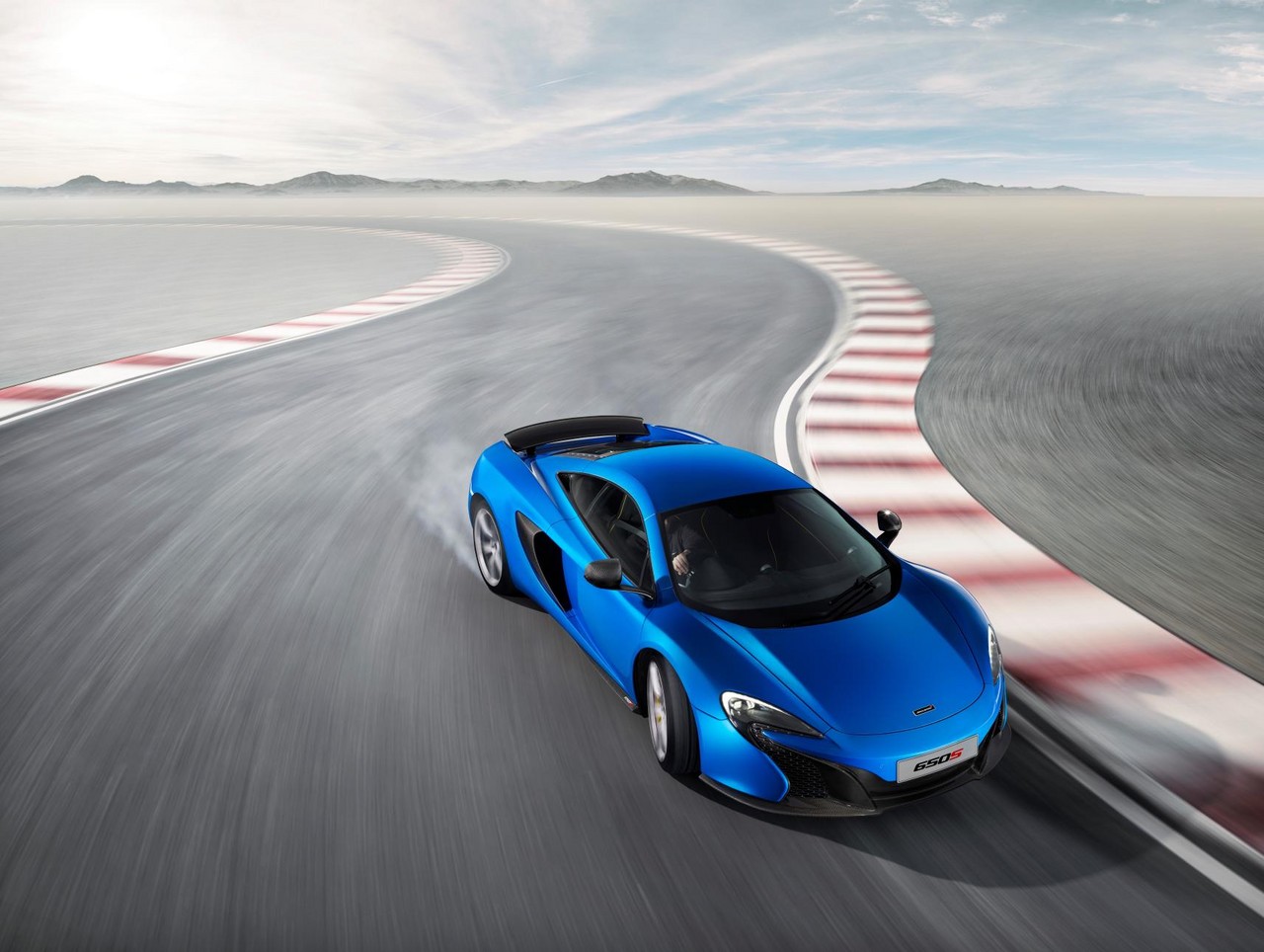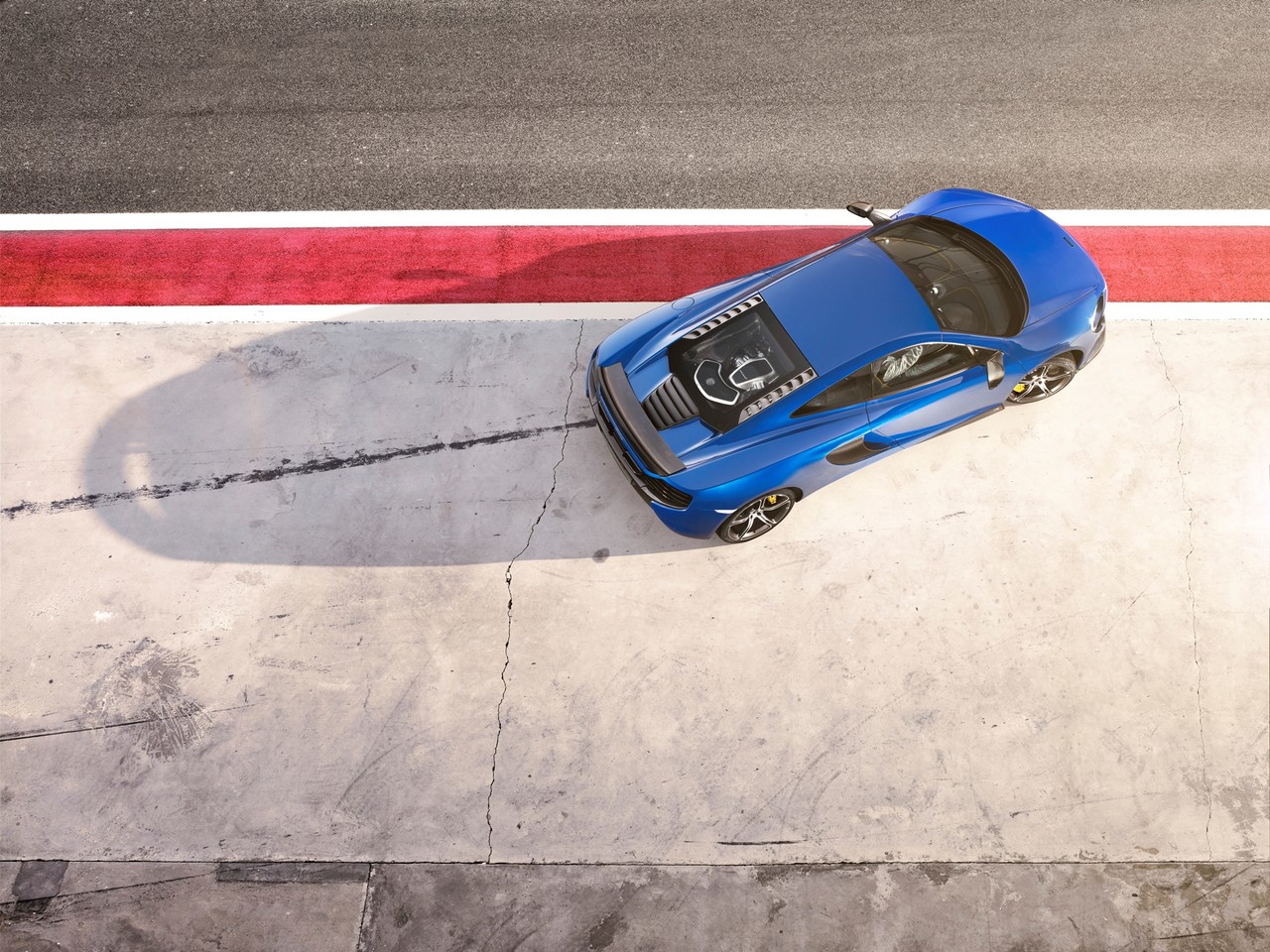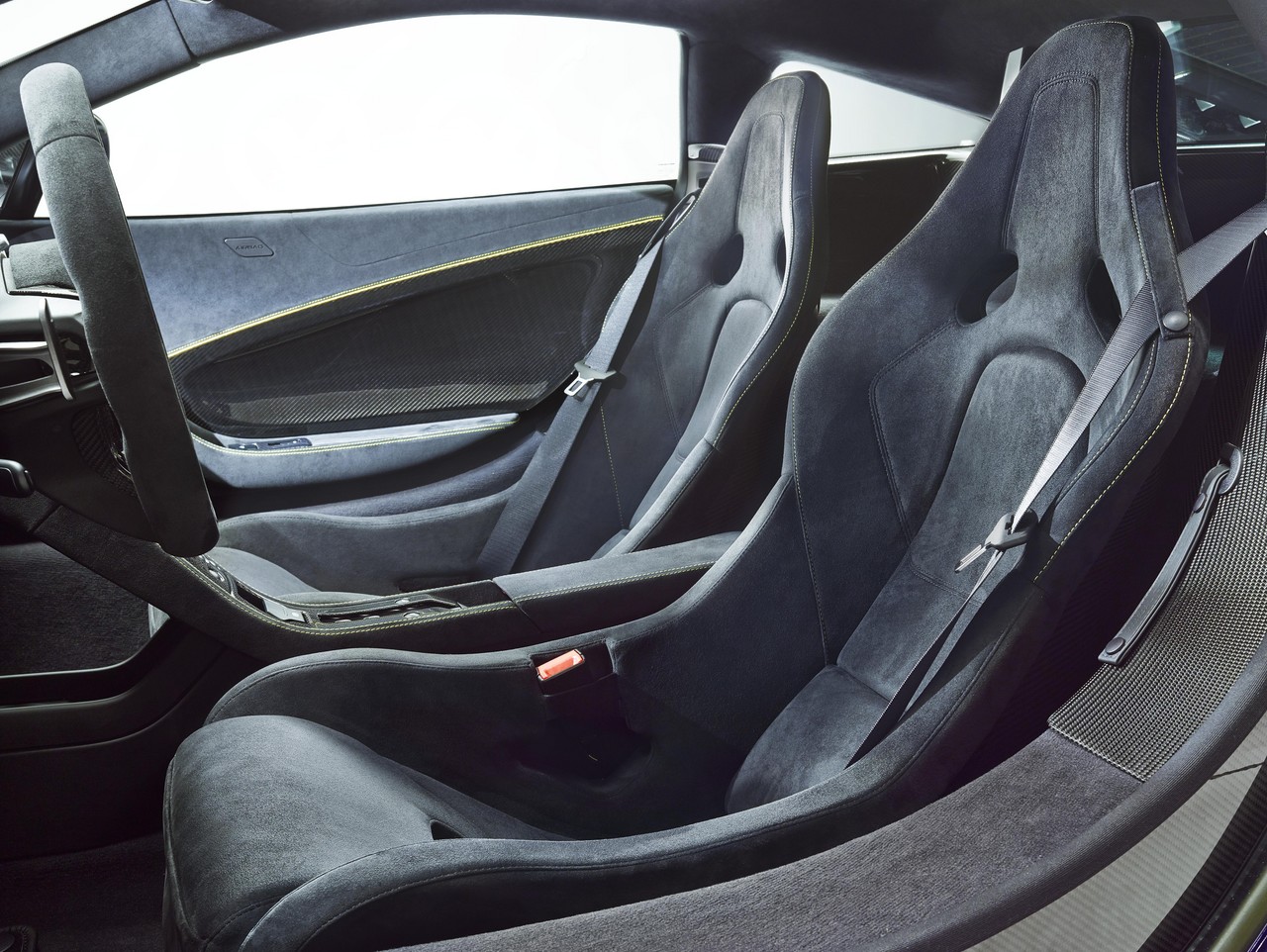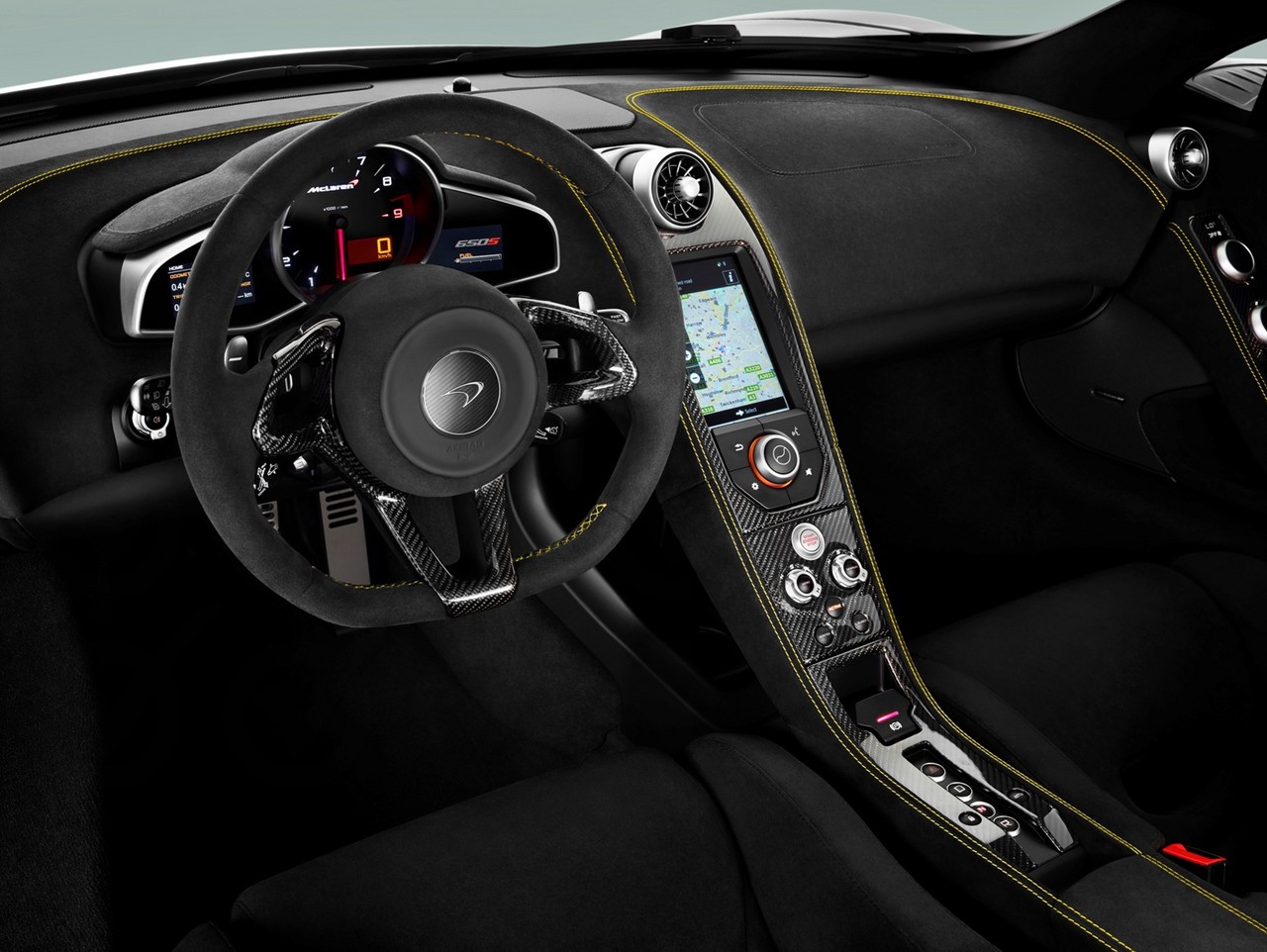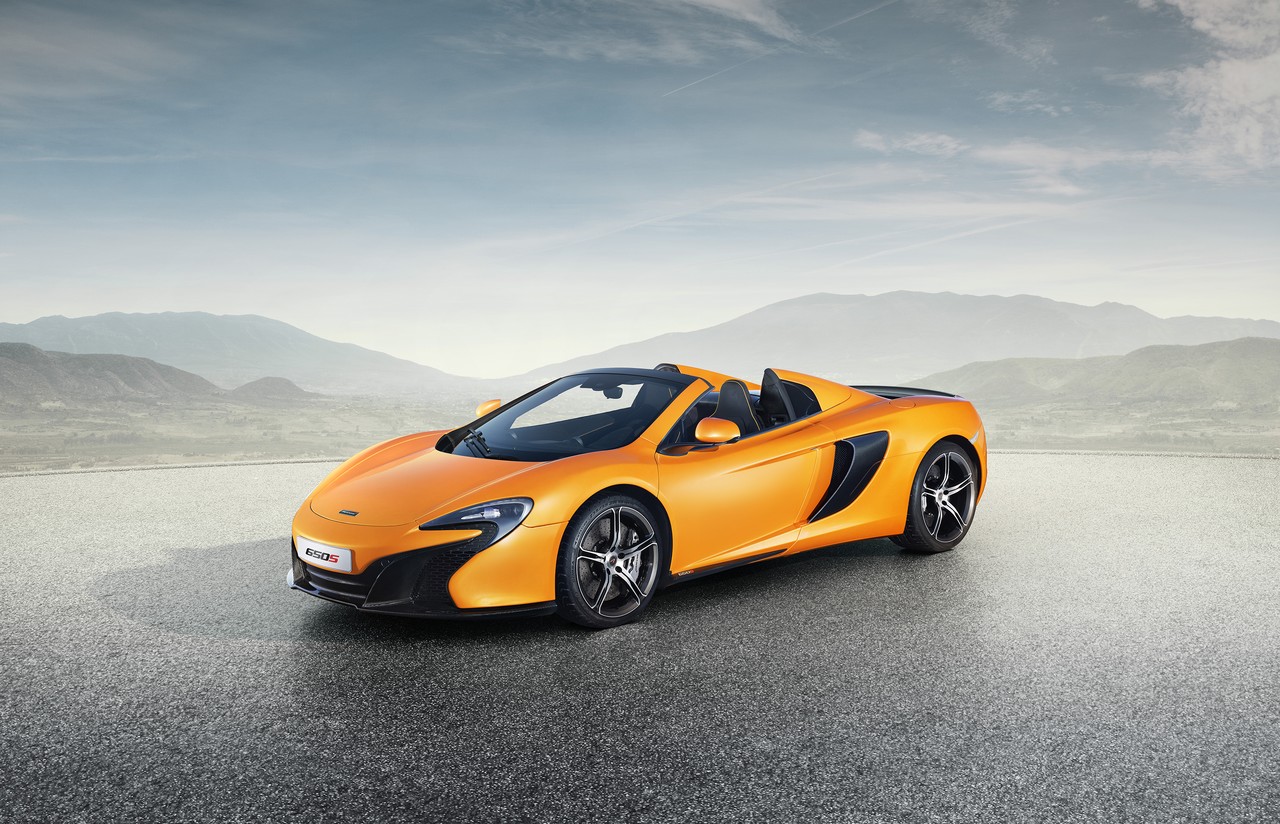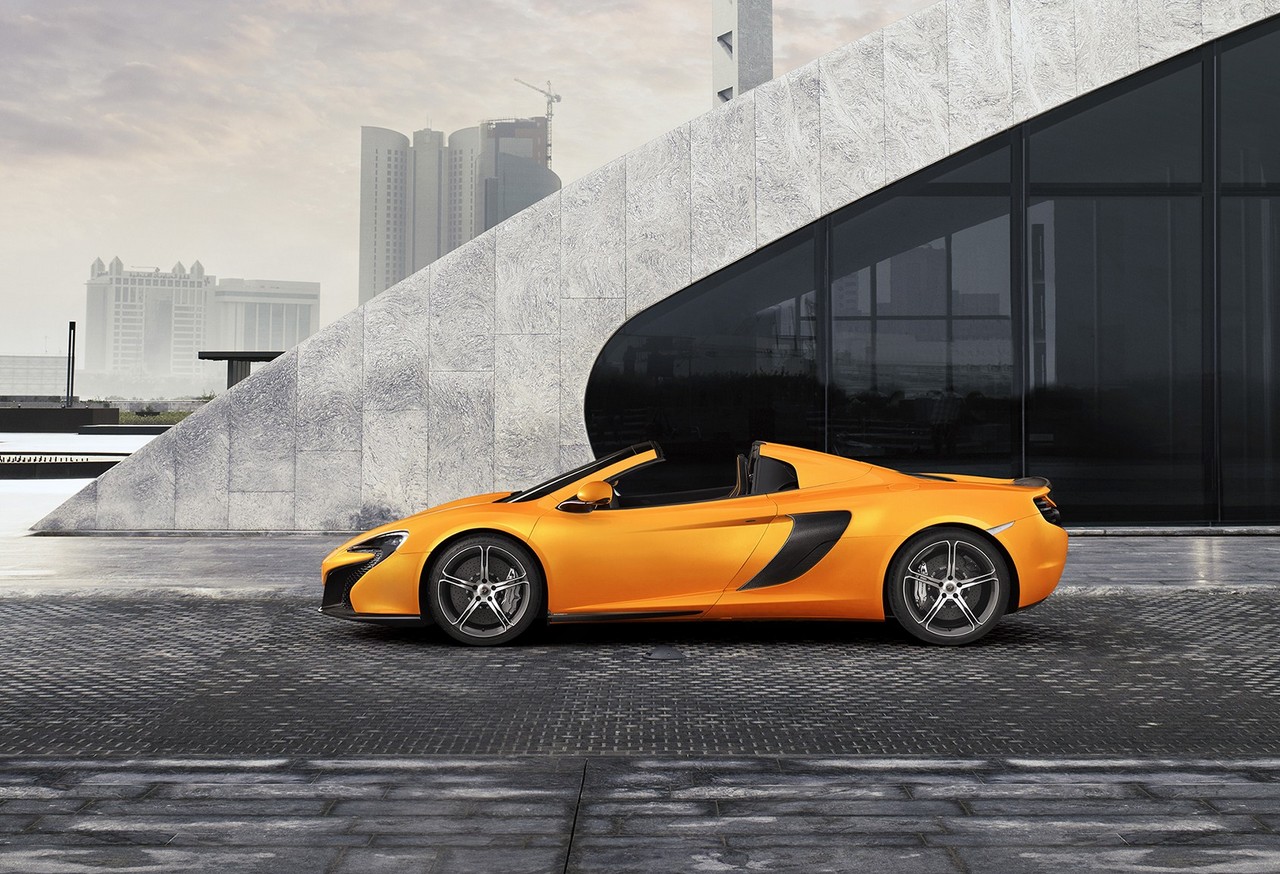
- Powerful 3.8-litre twin-turbo V8 engine
- Excellent dynamics
- Surprisingly compliant ride
- Accurate, linear steering provides good feedback
- Greater range of driving modes than McLaren MP4-12C predecessor
- Understeer at the limit
- Lacks aural excitement of Ferrari 458
- High maintenance costs
Overview
Released in Australia in March 2014, the McLaren 650S was available as a coupe or convertible with a retractable hard top (‘Spider’). Manufactured in Woking, England, the rear-wheel drive 650S was powered by a mid-mounted 3.8-litre M838T twin-turbo V6 petrol engine which was mated to a seven-speed double clutch transmission.
M838T engine and transmission
The 3.8-litre M838T twin-turbo V6 petrol engine featured dry sump lubrication, a flat plane crankshaft, composite cam covers and intake manifolds and Nikasil-coated aluminium liners. Compared to the MP4-12C , the 650S engine had new pistons, cylinder heads, exhaust valves and revised camshaft timing for greater power.
The M838T engine was mated to a seven-speed dual clutch Seamless Shift Gearbox (SSG) with automatic and manual gearshift modes. In manual mode, gears were changed using an F1-style rocker shift that would pivot in the centre of the steering wheel and actuated on either side of the steering wheel (pulling right shifted up, pulling left shifted down). The gearbox also featured:
- A ‘Pre-Cog’ (pre-cognition) function whereby the gearshift rocker had two positions with a slightly different haptic (or feel) for each; the driver could apply pressure to the rocker to prepare the gearbox to change ratios; the second pressure then activated the gearshift; and,
- An ‘inertia push’ function which – when in ‘track’ mode – could harness built-up kinetic energy to deliver an impulse of torque as the next gear was engaged. By doing so, the next gear could be engaged before engine speed had dropped, providing a continuous rate of acceleration that was unaffected by upshifts.
The 650S Coupe could accelerate from rest to 100 km/h in 3.0 seconds and to 200 km/h in 8.4 seconds; top speed was 333 km/h. The 650S Spider could accelerate from rest to 100 km/h in 3.0 seconds, though its 200 km/h time was 8.6 seconds and its top speed was 329 km/h.
Dimensions and body
The 650S was 4512 mm long, 2093 mm wide, 1199 mm tall (1203 mm for the Spider) and had a 2670 mm long wheelbase; dry weights for the Coupe and Spider were 1330 kg and 1370 kg, respecitvely. In part, the low kerb weights were due to the one-piece carbon fibre chassis (McLaren’s ‘MonoCell’) which had aluminium frames (front and rear) that were jig welded and bolted directly onto the chassis.
Suspension
The 650S had double wishbone suspension front and rear with coil springs and dampers which were interconnected hydraulically to provide adaptive responses according to road conditions and driver preferences as part of McLaren’s ‘Proactive Chassis Control’ system (which also included selectable ‘normal’, ‘sport’ and ‘track’ drives. The system also provided adjustable roll control under heavy cornering and the suspension could be decoupled when driving in a straight line for greater wheel articulation and compliance.
| Engine | Trans. | Peak power | Peak torque | |
|---|---|---|---|---|
| 650S | 3.8-litre twin-turbo petrol V8 (M838T) |
7sp DCT | 478 kW at 7250 rpm | 678 Nm at 6000 rpm |
Safety equipment
Standard safety equipment for the 650S included dual front airbags, knee airbags for both front occupants, front side airbags, ABS, electronic brake force distribution, electronic stability control and traction control.
Brakes
The 650S had 394 mm front and 380 mm rear carbon ceramic brakes.
Features
Standard features for the 650S included 235/35 R19 front and 305/30 R20 rear Pirelli P Zero Corsa tyres, a Meridian sound system with four speakers, IRIS satellite navigation, Bluetooth audio streaming and mobile phone connectivity with audio streaming, dual-zone climate control air conditioning, cruise control, Alcantara interior trim, full LED headlights, rear parking sensors, a rear view camera, automatic headlights, rain-sensing wipers, remote central locking, power mirrors with heating and folding functions, automatically dipping door mirrors when reversing, a height adjustable driver’s seat, a proximity key, trip computer, power-operated park brake, motion-sensing alarm and an immobiliser.
For the Spider, the two-piece retractable hardtop could be automatically raised or lowered in less than 17 seconds and could be activated at speeds of up to 30 km/h.
Brake Steer and Active Airbrake
Like the MP4-12C, the 650S had a ‘Brake Steer’ system which could brake the inside rear wheel when the vehicle entered a corner too quickly for the intended radius; the system could also brake the inside rear wheel when accelerating out of a corner.
Under braking or when going over a crest at speed, an ‘Active Airbrake’ would be raised to provide additional downforce and yaw stability. Once a small amount of wing angle was pushed into the airflow, the centre of aerodynamic pressure would force the bottom of the ‘wing’ back, raising the airbrake to its maximum angle using the ‘free’ airflow.
Related links
